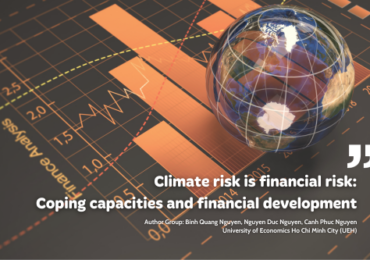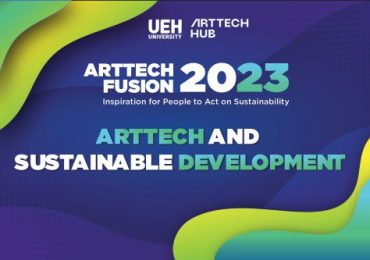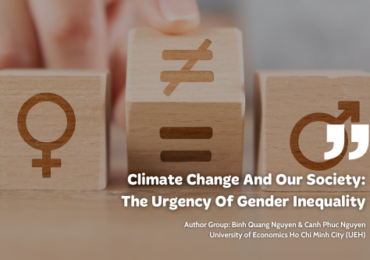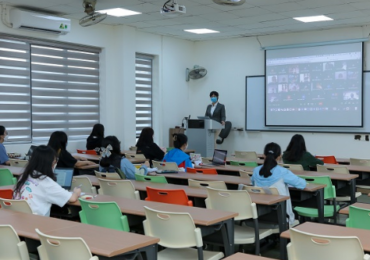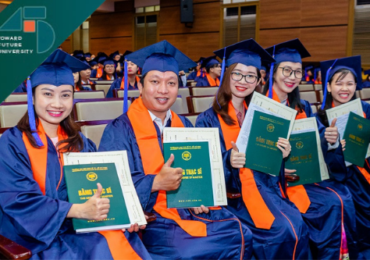Revolution in Experimental Economics
30 January, 2022
It goes without saying that the economists’ main task is to build models to explain phenomena occurring in one economy and to introduce adjusted forecasts. In fact, most of current economic researches have concentrated on revealing the cause-and-effect (causal) relationships, how one event leads to another.

What is the actual cause-and-effect (causal) relationship when so many impacting factors are being existing?
Economists often have to answer a series of questions, many of which have policy implications, centering cause-and-effect (causal) relationship. For example, every year, the regional minimum wage raise is always a hot topic on forums, because managers have to answer this key question: “Does the minimum wage raise in Vietnam increase unemployment?” or “Will the minimum wage raise in Region I (with developed economies in Hanoi or Ho Chi Minh City) reduce migration and increase employment in Region III or IV (with harsh and undeveloped economic development)?”.
Or will economists have to answer other more macroscopic questions about cause-and-effect (causal) relationship: Does the organizational culture of collective life promote economic development, in other words, is individualism or collectivism better for economic development? Does the highly-concentrated village collective culture in Northern region lead to better economic growth than the relatively-loose and individualized village culture in Southern region?
There are three ways to answer the above questions. The first way is to look around, find some typical cases, observe and draw conclusions. This method is commonly used but scientists do not do so. The second way is to rummage through the books, see what economic theories state about this case and come up with an answer. For example, Mankiw’s Theory of Labor Supply and Demand in Economics states that: as the minimum wage increases, the cost of labor becomes more expensive; consequently, labor demand decreases, leading to higher unemployment. We have a convincing answer: raising the minimum wage increases unemployment. Actual economists, nevertheless, won’t believe this second way either; instead, they implement the third way, using data to find cause-and-effect (causal) relationships between variables: between the minimum wage and unemployment, between collectivism and economic development.
This Podcast is to reveal the truth about the cause-and-effect relation (causal relationship) that Nobel Prize was awarded to David Card, Joshua Angrist and Guido Imbens – three scientists who solved it this year.
Let’s go back to one realistic example first. From January 1, 2020, the minimum wage in Region I in our country will increase by 240,000 VND compared to that of 2019 salary. If the number of employees in Region I in 2020 is to be compared with that in 2019, is the difference not due to a change in the minimum wage between two timing points? For example, if the difference is zero, it can be concluded that a minimum wage increase of VND 240,000 does not increase the unemployment rate in region I.
The mostly-used inference above is incorrect at one key point as follows: Labor force dynamics depends on a variety of factors: population growth, inbound and outbound migration, inflation, economic growth, investment, or labor costs. From 2019 to 2020, all factors affecting the labor force did change; how can it be concluded that only the change in the minimum wage (labor cost) leads to a change in the labor force? Analyzing the role of each factor towards the final result is not easy because the researchers only recognize the group of fluctuating causes and the group of fluctuating results; nevertheless, they can not identify the connection of these two groups: which cause leads to which result and how much this costs. The goal of empirical research is to identify the bridge between each cause and each effect.
The impact of a policy intervention on an entity (or an individual, a family, a business or a country) is defined as the difference in the outcomes that the subject receives when the intervention is performed, compared to that of being no intervention. The difficulty lies in the fact that: at a time, each subject cannot both receive and receive treatment to compare the difference in outcomes between with intervention and without intervention.

From left to right: David Card, Joshua Angrist and Guido Imbens – 03 American economists have just been awarded Nobel Prize in Economics for their work that draws conclusions from unintended experiments, also known as “natural experiment”
Photo: University of California, Berkeley, Wikipedia and Stanford University
Answers from experiments
This is a classic problem in the study related to causality statistics; nevertheless, it is quite surprising that economists have only been really interested in solving this issue in their empirical studies since the early 1990s.
To overcome this problem, some economists apply the method of natural science or that of medicine major, which is to organize random experiments. Researchers set up an intervention group, a control group and randomly assigned participants to two groups. Due to the random distribution, it can be assumed that the characteristics of the participants in the two groups are the same. Everything regarding the two groups is the same, the only difference is whether the intervention was present or not; therefore, the difference in outcomes between the two groups comes from the intervention. It is the intervention that causes those disparate outcomes. In 2019, three economists – Abhijit Banerjee, Esther Duflo and Michael Kremer – were awarded the Nobel Prize in Economics for design and application of a randomized experimental method to development problem study, specifically assessment of the impact of projects and policies for poverty reduction consequences.
On the other hand, many problems in labor economics cannot be implemented by random experiment; the point is that another way to solve the causal problem must be found. We do not have the perfect control group as in the experimental study. We don’t know what would happen if there were fewer immigrants or one person didn’t continue their education as that doesn’t happen in practice and it’s not possible to do experiments to test the influencing factors. No real experiment is conducted to produce controlled data, but the researchers can take advantage of the available data, use their keen eyes to select and organize the data as if it were in an experiment. This initiative is called “quasi-experiment method”, known as ‘natural experiment’ due to the nature of available data, the nature of not being arranged as that in a random experiment. Behind this group of methods are 03 scientists awarded 2021 Nobel Prize in Economics: Guido Imbens, Joshua Angrist and David Card, called this as “Credibility Revolution”. This method assists causal analysis results in becoming more reliable and scientific.
Considered a methodological revolution that originated in labor economics in the early 1990s, pseudo-experimental methods, currently, have become the main method group for solving causal relationship problems in many applied economics fields: development, health, resources and environment, production and consumption behavior, finance, even, macro-area.
At that point, they must have exclaimed that they are revolutionizing only the reliability character in empirical economic analysis, not something else. This “something else” element here is implied through the results of David Card and Alan Krueger’s revolutionary key research paper on minimum wage topic.
In the early 1990s, New Jersey State raised the minimum wage per hour from $4.25 to $5.05. The current Orthodox Economic Theory at that time asserted that this wage raise caused unemployment. Card and Krueger were extremely delicate in choosing to study labor data from the fast-food chain with low wages and minimum wage change would make a lot of sense. More subtly, they chose to compare the figures of New Jersey’s fast-food industry employment with those of the neighboring state, Pennsylvania. Eastern Pennsylvania, to be exact, bordered New Jersey; therefore, the demographics, the temperatures, the weather, the prices, maybe even the tastes were similar. Using their flair for choosing natural data, these two economists created a control group and an intervention group that changed the minimum wage. Changes in labor outcomes for control group (Eastern Pennsylvania) contained changes in the economy over time. Changes in labor outcomes for intervention group (New Jersey) contained changes in the economy over time and those in minimum wage policy. Subtracting these two changes from each other left the change in the number of workers due to the minimum wage policy. This was the impact of the minimum wage policy on unemployment. The effect was quite pure because many confounding variables were filtered out. This method is called “difference in difference”. Card and Krueger indicated that raising the minimum wage did not increase unemployment in New Jersey.
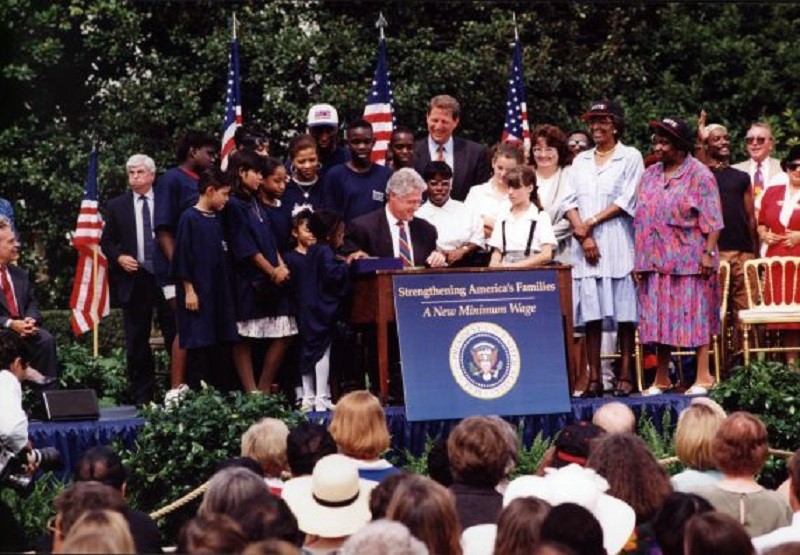
In 1996, President Bill Clinton agreed to increase US minimum wage after numerous delays from previous presidents. Previously, the issue of raising the minimum wage had been hotly debated because of the fear that it would reduce employment. Image source: Econhist.
This result, in the early 1990s, was considered as “heretic”. Even James Buchanan, who won the Nobel Prize in Economics in 1986, wrote in Wall Street Journal that the study was written to promote ideological interests, implying that Card and Krueger were left-leaning, promoting higher wages for labor, ignoring economics law.
Leftist ideology attribution also came from the 1990 study by Prof. David Card on migration. The question was whether migrants reduced wages and took up jobs from the people they were coming from? Prof. Card analyzed the data of 120,000 migrants who, in 1980, left Mariel Port in Cuba for Miami, increasing the workforce at Miami by 7%. He used a disparity analysis to compare labor outcomes in Miami with results from several other cities that resemble Miami without large numbers of immigrants. As a result, it was found that wages and unemployment rates in Miami were roughly the same as in other cities. Therefore, migration does not change the labor market.
Factional minds from political parties immediately thought of implementing researches so as to promote migration and raise the minimum wage. However, Prof. David Card’s purpose was impressively enormous than those of political deductions, he just aimed at to focusing on the beauty of research for a more accurate and scientific economic research. “Labor economists are trying to be more scientific: they find specific hypotheses and test them as carefully as possible,” he emphasized.
One beauty of pseudo-experimental method lies in Angrist and Krueger’s paper in 1991 related to the impact of one-year schooling towards one’s income. How much would the income increase by investing for an extra school-year? This is a difficult question to answer because many unobserved factors (intelligence and persistence) also affected income besides going to school. How to separate the partial impact of education on income? Ideally, two people who were exactly identical: studying in the same environment, the only difference was that one learns a school-year longer than the other; the researcher only needed to compare these two persons’ incomes, the difference in income was definitely caused by the difference in this study-length element. The reality never witnessed that ideal. Angrist and Krueger were very subtle when recognizing that students in the same class enjoyed the same educational quality with some different schooling lengths. From entering 1st grade to graduation at the age of 16, pupils born in 4th quarter of the year would study some months longer than those born in 1st quarter in case the school opened in September. Since the fact that which pupils were born at which time within the year was completely random, Angrist and Krueger created two control and intervention groups as in a randomized experiment, in contrast, with natural data. Comparing realistic data for the two groups, Angrist and Krueger estimated that one-year extra education could increase income by 10%.
Unlike Prof. Card and Prof. Angrist possessing ‘green eyes’ with realistic phenomena and data, 3rd Laureate of this year’s Nobel Prize in Economics, Prof. Guido Imbens, is one theoretical man. He developed theoretical frameworks and mechanisms towards causality calculation for his colleagues to put into application.
Card and Krueger’s minimum wage study in 1994 changed the picture of American labor policy. In 1996, President Bill Clinton agreed to increase American minimum wage after numerous delays from previous presidents. President Clinton, himself, referred to evidences from Card and Krueger’s research before signing Executive Decree. Empirical studies in Labor Economics by Card, Krueger, Angrist and the following generation in many topics, listing as: minimum wages, migration, education, labor supply behavior, labor productivity or wage discrimination have laid an important foundation for employment policies in other countries and International Labor Organization.
The answer towards Việt Nam case
Returning to the question at the beginning of this article, does the highly concentrated village collective culture in Northern region lead to better economic growth than the relatively loose and individualized village culture in Southern area? It is difficult to conduct random experiments to generate data on economic growth. Nevertheless, natural data abounds. Does anyone have ‘green eyes’ with a keen observation from the available natural data so as to put together a pseudo-experimental analysis like Card and Angrist did?
Pseudo-experimental method group has been applied by many Vietnamese researchers in many studies to find a cause-and-effect (causal) relationship or to evaluate one policy impact. Many universities have incorporated this method into their curricula from Bachelor’s to Doctoral levels.

Prof. Melissa Dell of Harvard University analyzed the socio-cultural context, village structure of different communities in Gia Định to answer the question of whether collective culture leads to better economic results.
Picture of An Nam village on Sài Gòn River at 19th century. Source: historicvietnam.com
However, the person with ‘green eyes’ with the data to solve the above question in Vietnam is Prof. Melissa Dell et al. of Harvard University. Prof. Dell observed that, in Tiger year 1698, Lord Nguyễn Phúc Chu established Gia Định Palace, set up a tax collection station on Sài Gòn – Đồng Nai River and recruited migrants from Đàng Trong to construct communes and villages. 1698 border, on one side, was strictly condensed with culture, the strict organization of villages and communities in the countryside, on the other hand, was influenced by Khmer culture. A natural experiment divides the study sample into two groups. Because the space was located close to each other, the impact factors on environment, weather, topography are the same. The research team used the ‘regression discontinuity design’ technique which belongs to pseudo-experimental method group developed by Card, Angrist and Imbens, to answer the question of whether collective culture brought better economic results. As a result, Đại Việt-style villages are more cooperative, creating better infrastructure, less farming, less informal labor and better economic conditions.
This research paper is published in Econometrica Journal, number 1 in Economics field, for its creative application among historical facts, contemporary data and reliable methods named in Nobel Prize in Economics this year.
Referring to this study to light up a dream that, someday, more Vietnamese researchers can do the same thing: looking deeply into Vietnamese history, society and people, using modern world methods, letting data and facts speak scientifically, helping us to understand ourselves better. (Author: Dr. Pham Khanh Nam – UEH School of Economics, Law and Management).
This is in Series of Spreading research and applied knowledge from UEH, We would like to invite Distinguished readers to look forward to PODCAST ECONOMICS NUMBER #17 “Land law renovation for economic development boost”.
News, photo: Dr. Pham Khanh Nam – Department of Marketing and Communication.
Paper and podcast were edited from Tia sáng Newspaper (further details can be viewed here)






